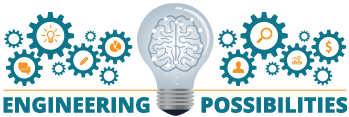Embarking on a Lean Transformation journey is a strategic decision for any manufacturing operation aspiring to achieve operational excellence. At the foundation of this transformative endeavor is the invaluable opportunity of conducting a Lean Assessment. In this blog post, we explore why and how completing a Lean Assessment at the beginning of a Lean Transformation sets the stage for success.
Understanding Lean Assessment:
A Lean Assessment serves as a diagnostic tool, offering a comprehensive analysis of the current state of a manufacturing operation. It involves evaluating various aspects, including processes, practices, and cultural alignment with Lean principles. This assessment provides a clear snapshot of the organization’s strengths, weaknesses, and opportunities for improvement, laying the groundwork for a targeted and effective Lean transformation.
Why a Lean Assessment should be your first action:
Identifying Operational Inefficiencies:
The primary benefit of a Lean Assessment is to identify operational inefficiencies. This allows manufacturing leaders to pinpoint areas where waste, bottlenecks, and non-value-added activities exist within the current processes. Understanding these pain points is essential for crafting targeted improvement strategies.
Creating a Baseline for Continuous Improvement:
A Lean Assessment establishes the baseline for continuous improvement. By evaluating existing processes, the assessment provides a starting point against which future progress can be measured. This baseline becomes a reference for setting improvement goals and tracking the impact of Lean initiatives over time.
Aligning with Organizational Goals:
The assessment process enables alignment with organizational goals. By evaluating how well current processes support overall business objectives, leaders gain insights into where adjustments are needed. This alignment ensures that Lean initiatives are purposeful and contribute directly to the success of the organization.
Engaging Stakeholders and Building Commitment:
Involving key stakeholders in the Lean Assessment fosters engagement and builds commitment to the transformation journey. By actively participating in the assessment process, employees become stakeholders in the success of Lean initiatives, creating a sense of ownership and dedication to improvement efforts.
Setting Priorities and Sequencing Improvement Activities:
Through the assessment, manufacturing leaders can prioritize improvement activities based on their impact and feasibility. This strategic approach helps sequence initiatives to maximize the overall benefit to the organization. It ensures that the most critical areas are addressed first for rapid and impactful results.
Building a Case for Change:
The findings from the Lean Assessment provide concrete evidence and data to build a compelling case for change. Whether it’s reducing lead times, improving quality, or optimizing resource utilization, the assessment results offer a data-driven rationale for the need for the Lean Transformation to stakeholders at all levels. The more real you can get in terms of what is not working in the process, the better.
Customizing Lean Strategies:
Not all manufacturing operations are alike, and a one-size-fits-all approach to Lean Transformation rarely yields optimal results. The Lean Assessment enables leaders to customize Lean strategies based on the unique characteristics and challenges of their specific operations. This tailored approach increases the likelihood of success.
Engineering Possibilities Lean Assessment Approach:
- Define the Lean Assessment Scope and Objectives:
Clearly define the scope and objectives of the Lean Assessment. Establish what aspects of the operation will be evaluated and the desired outcomes of the assessment.
- Capture the Current State:
Work with a team of subject matter experts in the business to create a detailed yet high-level process map of the overall production process that focuses on the value provided to the customer. Identify inputs and outputs to key sub-processes such as finance, planning, and procurement processes. Gather relevant data and metrics that provide insights into the performance of existing processes. This may include cycle times, quality data, defect rates, lead times, and other key performance indicators (KPIs).
Conduct Gemba Walks and process observations to see the process in real-time. This hands-on approach allows the assessment team to witness the operations and gain a deeper understanding of the challenges and opportunities. Actively engage employees at all levels and seek their input. Employees on the front lines often possess valuable insights into operational challenges and potential improvement opportunities.
Complete the 12 point Lean Assessment Matrix to evaluate the current performance of the production or service processes, the system(s) workflow, staff empowerment and engagement, and a culture assessment to determine the company’s readiness for lean transformation.
- Create a Compelling Future State
Creating the Future State is the most important aspect of the Lean Assessment as it creates the context and intention for the Lean Transformation. Using the same metrics established in the Current State, a picture of the future is created. The Future State is the outcome you are out to cause, how you get there is established later, when the Lean Pathway is created. For now, the Future State is the stake you place in the ground that guides your actions. The less you immediately know how to fulfill the future, the better.
As an example, in one of my early lean projects, a Plant Manager challenged me to have no rate cuts in a production process for an entire summer. This was a process that regularly had to cut production rates in the hot summer months by 10% to 20% every day. The future I was challenged to create was a distinct space from how the plant had traditionally operated, and at first glance seemed impossible. Using this approach, we not only fulfilled on no rate cuts that summer, but the plant made an entire extra month worth of production to the tune of $11M in profit. I’ve led every lean project using this approach ever since.
- Develop the Lean Pathway:
Based on the findings and recommendations, develop a detailed action plan for the Lean transformation. This plan outlines the specific initiatives, responsible individuals, key performance indicators (KPIs) for measuring progress, and the project timeline.
Communicate the results of the Lean Assessment to stakeholders across the organization. Transparent communication builds support for the upcoming Lean Transformation and ensures that everyone is informed and aligned with the proposed changes. Prioritize improvement actions based on the benefit they provide, and the effort required to execute each initiative.
- Lean Transformation Implementation
Launch continuous improvement initiatives based on the Lean Assessment. Regularly revisit the assessment results and update them as the organization evolves. This iterative approach ensures that the organization remains agile and responsive to changing needs.
The Lean Assessment process is a critical initial first step of a Lean Transformation. By identifying operational inefficiencies, creating a baseline for continuous improvement, aligning with organizational goals, engaging stakeholders, setting priorities, building a case for change, and customizing Lean strategies, organizations can position themselves for transformative success. The systematic approach of defining the scope and objectives, capturing the Current State, creating the Future State, and developing the Lean Pathway to fulfill the Future State ensures that the Lean Assessment becomes a catalyst for sustained excellence. As manufacturing operations embrace the principles of Lean, the assessment becomes not just a starting point but a dynamic compass guiding them towards operational efficiency, reduced waste, and a culture of continuous improvement.
Ready to start your own Lean Transformation? Curious to see how it works? Schedule a complimentary Discovery Call to see what’s possible for your organization!


Recent Comments